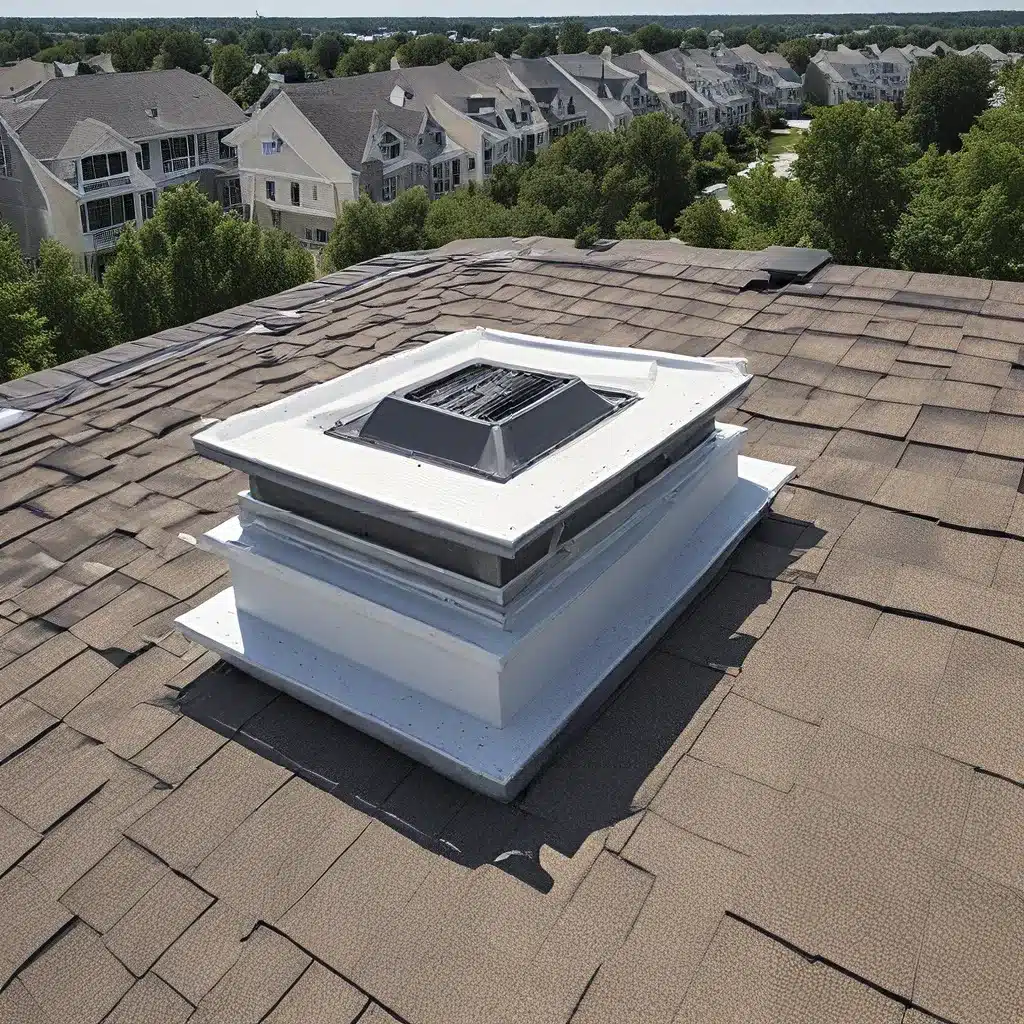
As a homeowner, I’ve faced my fair share of roofing challenges. From dealing with pesky ice dams to battling persistent condensation, I’ve learned that proper roof ventilation is the key to keeping my home healthy and my energy bills low. And let me tell you, it’s been quite the journey!
The Ventilation Conundrum
When it comes to roof ventilation, it’s easy to feel like you’re navigating a maze of options, each with its own set of pros and cons. Do I go with a ridge vent? A power attic fan? Soffit vents? The choices can be overwhelming, and the consequences of making the wrong decision can be downright costly.
I remember when I first started researching this topic – it felt like I was wading through a sea of technical jargon and conflicting advice. Do I need a mechanical system to suck the hot air out of my attic, or should I rely on natural airflow? Should I focus on sealing the ceiling first, or is ventilation the priority? It was enough to make my head spin!
Mastering the Air Flow
After spending countless hours poring over articles and forums, I finally started to get a handle on the science behind roof ventilation. It all boils down to air flow – the delicate balance between the air coming in through the soffits and the air leaving through the ridge (or other high vents).
See, the key is to create a continuous air path that allows hot, moist air to be efficiently whisked away from the attic. Without this, you’re essentially trapping that nasty stuff up there, leading to all sorts of problems like mold, mildew, and even structural damage.
But here’s the tricky part: the way air moves through an attic is not always intuitive. It’s not as simple as just installing a bunch of vents and calling it a day. Factors like wind, temperature, and even the layout of your home can all play a role in how the air flows.
Busting Ventilation Myths
As I dug deeper into this topic, I started to uncover some common misconceptions about roof ventilation. For example, power attic fans – those big, noisy suckers that are supposed to suck the hot air out of your attic – are actually more trouble than they’re worth.
Turns out, these fans can create a negative pressure in the attic, which can actually pull conditioned air from the living space and waste a ton of energy. Not exactly the ventilation victory I was hoping for!
Another myth I busted was the idea that ridge vents are the holy grail of roof ventilation. While they can be a great option in some cases, they’re not a one-size-fits-all solution. Depending on the layout of your roof and the climate you live in, other types of vents may be more effective.
The Ventilation Sweet Spot
So, if power fans and ridge vents aren’t the answer, what is? Well, the secret lies in finding the right balance of intake and exhaust vents. You want just enough airflow to keep things dry and comfortable, without creating a suction that’s going to suck the heat (and your money) right out of your home.
After much trial and error, I’ve found that a combination of soffit vents and high-mounted exhaust vents (like gable or roof vents) can be an effective way to achieve this balance. The key is to make sure you have enough intake area (like soffit vents) to match your exhaust capacity.
Southern Roofing Co. has been a fantastic resource in helping me figure out the right ventilation setup for my home. Their team of experts has a deep understanding of the science behind roof airflow and can provide customized solutions based on the unique characteristics of your property.
Staying One Step Ahead
Of course, roof ventilation is an ongoing process, not a one-and-done solution. As the seasons change and your home’s needs evolve, you may need to make adjustments to keep things running smoothly. That’s why it’s important to stay vigilant and regularly inspect your roof for any signs of trouble.
For example, I’ve learned that ice dams can be a real pain in the you-know-what during the winter months. These pesky buildups of ice and snow can block your vents and prevent proper airflow, leading to all sorts of headaches. But by being proactive and clearing those blockages, I’ve been able to keep my home comfortable and energy-efficient all year round.
The Ventilation Frontier
As I continue on my journey of roof ventilation mastery, I can’t help but feel excited about the future of this technology. With advancements in materials, design, and even smart home integration, the possibilities for optimizing roof ventilation are truly endless.
Imagine a world where your attic vents automatically adjust to the changing weather conditions, or where your home’s temperature and humidity sensors work in tandem to ensure the perfect balance of airflow. It’s like something out of a sci-fi movie, but the future of roof ventilation is already here.
So, if you’re like me and you’re constantly battling the elements when it comes to your roof, take heart – the answers are out there. With a little bit of research, some trial and error, and the right team of experts by your side, you too can conquer the ventilation challenge and achieve the ultimate in roof performance.